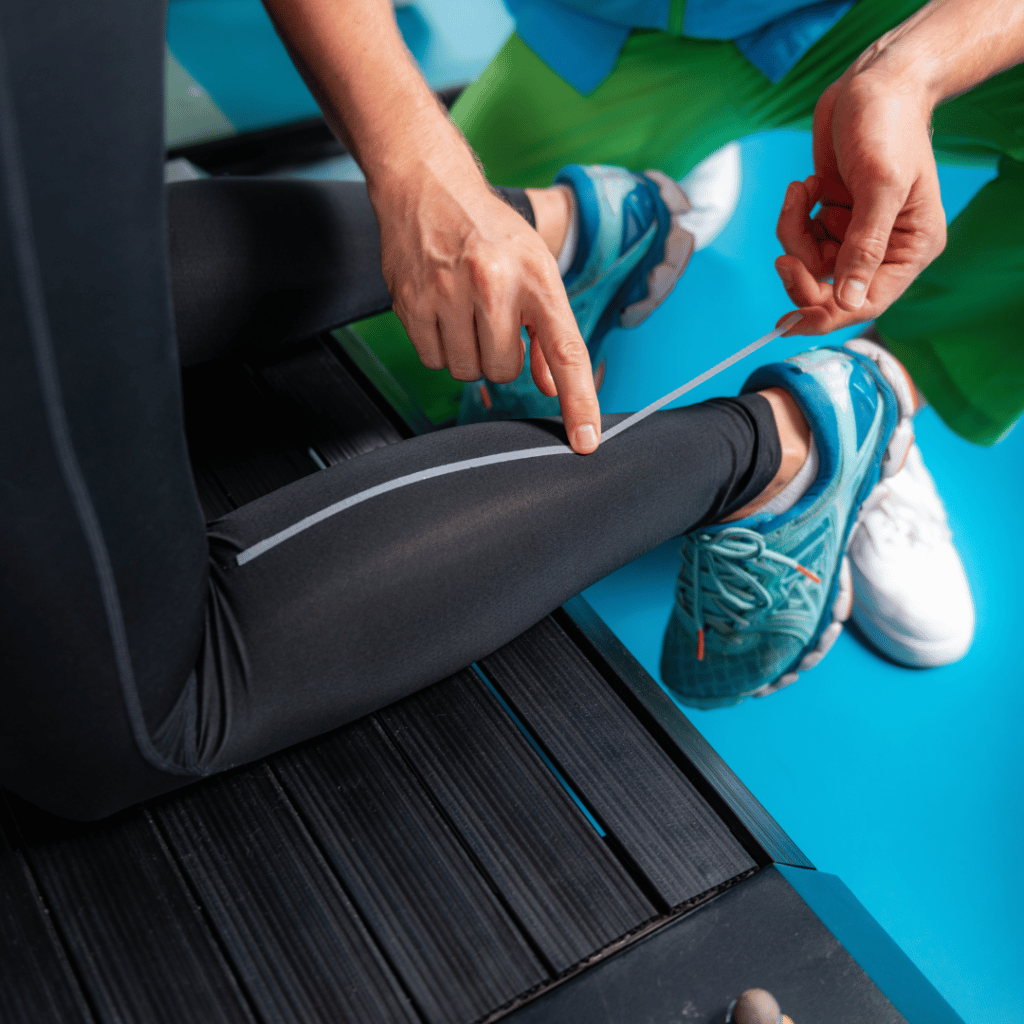Running requires balance, strength, and range of motion. Your joints and muscles work together to drive you forward. Your body cycles through a running gait cycle, which describes the repetitive pattern of one foot and then the other contacting the ground. Understanding your gait helps reduce running-related injuries and maintain top performance.
Phases of the Running Gait Cycle
There are two phases in the gait cycle—stance and swing. The stance phase is when a foot is on the ground. Most people make initial contact with the ground with their heel, but some people make contact with the ground with their midfoot, forefoot, or toes. Then, in the mid-stance, the foot is flat. The heel lifts and then takes off, propelling the runner forward. The swing phase starts when the toes leave the ground. Your foot swings forward, ready for the next foot strike.
Biomechanics of the Running Gait Cycle
A runner’s joints and muscles move in unison with each gait cycle. Runners need strong glutes, quads, hamstrings, and core to rebound into the take-off phase. During this propulsion, the pelvis tilts forward while the foot, ankle, knee, and hip extend.
Running Rotation
Perfecting your running gait includes paying attention to rotation. During each stride, the pelvis rotates opposite the trunk, counterbalancing each other. Faster runners tend to have higher rotation. However, this is limited by the mobility of the joints and muscles in the hips. A physical therapist can work with you on exercises to improve rotation and mobility.
How do I know what my running gait is?
A biomechanical analysis lets runners measure their gait. For example, you can record a run to study your gait pattern. Likewise, physical therapists offer evaluations and treadmill observations. There’s even diagnostic software that analyzes running patterns.
A Unique Footprint
A biomechanical analysis lets runners measure their gait. For example, you can record a run to study your gait pattern. Likewise, physical therapists offer evaluations and treadmill observations. There’s even diagnostic software that analyzes running patterns.

